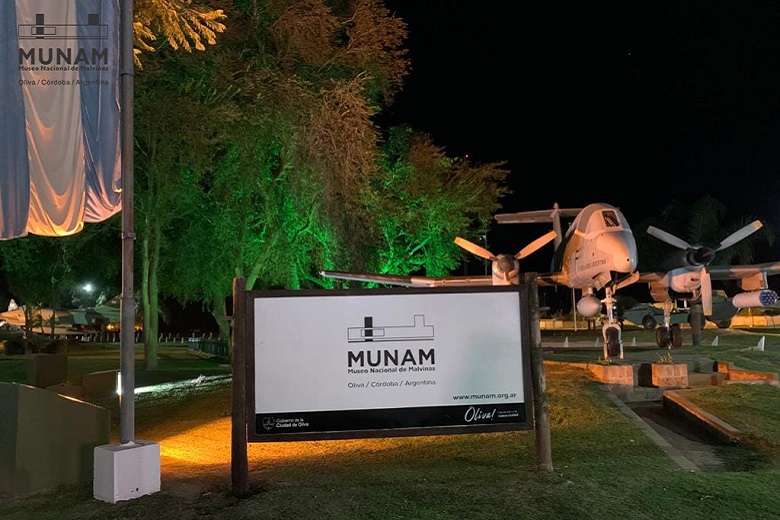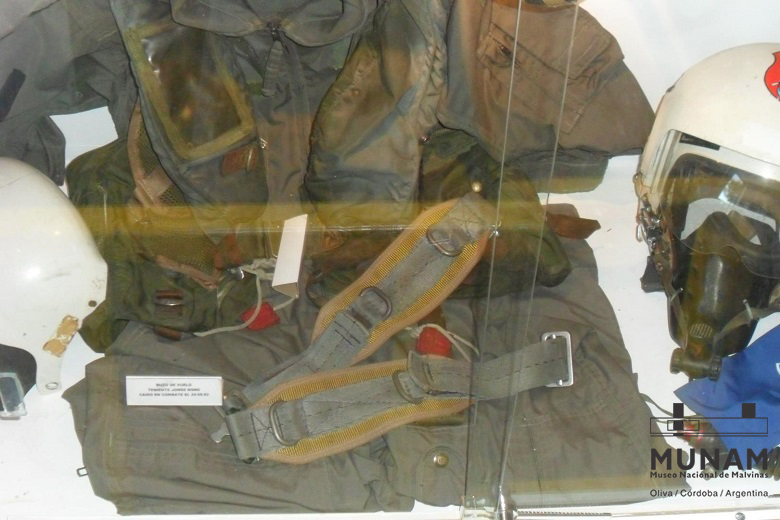History
Without cape, super powers, big suits, and majestic ships. For Gabriel, back in 1982, history was not about superheroes, but about heroes: real, flesh and blood.
He learned about them by reading a weekly of the time that dealt with the story of a man in combat, Captain Gustavo Argentino García Cuerva, the first KIA in the Argentine Air Force, when trying to land in Puerto Argentino. The connection was as immediate as it was inexplicable, in the case of a 12-year-old boy who hardly understood the scope of the word war. From that very special moment, he set out to honor the sacrifice of that Captain, saving his savings to deliver them to the family as soon as possible.
He continued then, during the course of the conflict, adding each pair of coins that he found out there and for which he reserved a much more dignified and supreme destiny than the occasional candy.
Shortly after the war ended, he decided to write to Pablo Marcos Carballo, an Argentine aviator who had many combat missions in the Malvinas, and whom he had met by reading the book "Dios y los Halcones". To his surprise, not only did he receive the answer to his letter, but he was even surprised one morning with a low-flying flight of his glorious squadron of war veteran planes. The whole city took to the streets motivated by the roar of four fighter planes. combat. From that day on, three or four times a year, very early in the morning, Gabriel waited for him anxiously on the water tank, with a flag in his hands, to respond to the passage of this Malvinas hero.
In 1984 Gabriel traveled to San Luis (Argentine state) to arrange a meeting with Pablo, so he decided to take with him the savings that he had saved since 1982 to give them to the family of Captain García Cuerva. But Carballo surprised him by suggesting that he allocate that money to cover the expenses that would require him to write letters to the families of all the fallen, expressing his gratitude and accompaniment.

And so it was that for ten years, without interruption, he wrote to each of the families of the fallen in Malvinas. Some did not respond; but a lot yes. Among them, the widow of Captain García Cuerva, who gave him the first object that the Museum had: the gala´s epaulette of that aviator.
For long months, a bit of the history of the war was reconstructed in each letter that came back, paragraphs of ink that recovered lost fragments, first-person experiences that the Malvinas chapter had outlined in hundreds of families. But almost like an inevitable future, that faceless bond that had begun to be woven, required a face-to-face meeting between those who shared the search for the deserved recognition of each ex-combatant and their families. It was there that, in 1993, a lunch brought Gabriel together with many of the families with whom he had been writing for so many months
At that meeting, Gabriel told everyone his intention that these life stories be preserved in a physical place that symbolizes everything that the war represented for each one of those who participated in it. From there, he began to receive documentation, personal belongings, photographs and different objects that gave rise to the Malvinas National Museum, which today ranks to the Oliva city and which gives shape to the collective memory.
A place where each object traces a bridge with the climate of the time that was traced during the conflict, recovering uniforms and helmets, bullets, gala´s epaulette, airplane boards, boots and caps, photos, letters and Argentine flags, plaques and pictures. A place where each object has a history, almost never anonymous, that shorten distances with those years and that strengthen the memory for several decades that separate us from those days
Our collection
Full uniforms and rags. Posthumous letters and others that hide stories with happy endings. Doodles that children from Cordoba sent thousands of kilometers to be close to their father. Imposing war veteran aircraft. Communications equipment. Survival items. Remains of planes and ships, Argentine and English. Bombs, photographs, newspapers of the time. Maps and stamps. Decorations, ammunition and flags. Confessions and poems. joys and sorrows.
The Malvinas National Museum can be visited every day. It does not have doors or bars that separate visitors from the items on display. The main room, inside the Belgrano's bow, is open on weekends and can be visited accompanied by Gabriel or other members of the Foundation.














